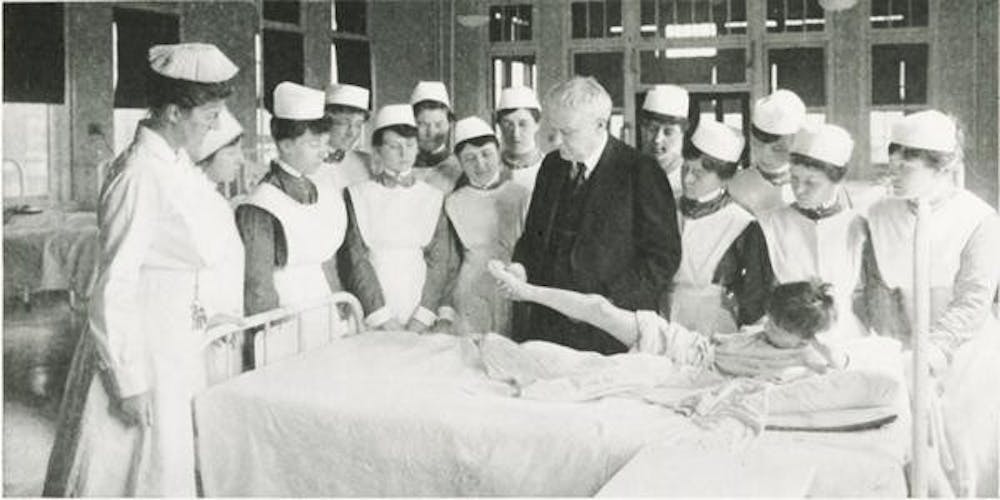With Gov. Eric Holcomb extending Indiana’s stay-at-home order until April 20, the IU community will become increasingly weary of social distancing, and all the while the coronavirus will continue to spread.
Some students would prefer not to practice social distancing at all. The IU Police Department shut down three parties last weekend. Other students must make difficult decisions about their living situations. Arrangements that worked for the first two weeks of quarantine might not be sustainable, especially due to financial constraints.
Then there’s the issue of romance — and sex. “Want to quarantine together?” has become a relationship milestone for couples. New York City's health department has actively discouraged sex with people living in other homes, with written guidance saying, "You are your safest sexual partner." This might not be a satisfying thought for students who don't live with romantic or sexual partners.
These are real challenges, and the responses to them must be based on what works for our community. An important source of good examples is IU history.
To learn how the IU community can respond to COVID-19, look no further than the Spanish flu. Considered the deadliest pandemic in history, the 1918 flu killed more than 50 million people. The Spanish flu appeared on IU's campus between October 1918 to February 1919. Thanks to decisive actions to prevent the spread, however, only three students died.
What were some of those actions, and what can they teach us today? I looked through months of archives of the Indiana Daily Student and read its coverage of the pandemic. There was a lot to learn.
Here are five lessons that we should take away from IU's response to the Spanish flu.
Lesson 1: “NO DATES”
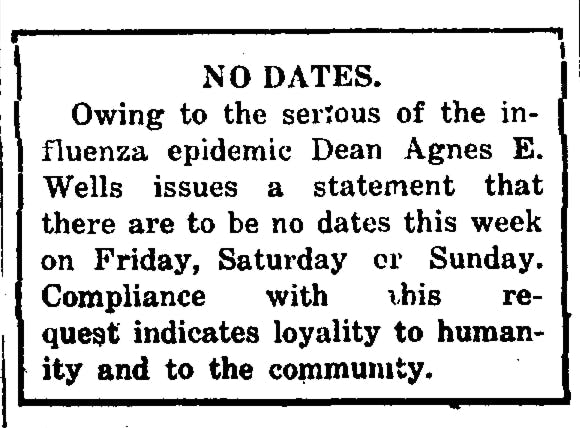
Social distancing during the Spanish flu meant more than staying home from school. Bloomington residents, including students, faced various restrictions on going into town for months. These rules were commonly called "flu bans."
Students did not enjoy the flu bans. When the 1919 ban was finally lifted on Jan. 21, the IDS front page read, "INFLUENZA OPPRESSION ENDS." A poem printed on Jan. 25 praised "flu-ban breakers."
The rule that students seemed to have hated most was about dating. Dean of Women Agnes Wells literally banned dates — twice. A notice with the words "NO DATES" appeared in the IDS in November 1918. The second ban was imposed the following January. Although it was controversial, banning dates communicated the seriousness of the threat.
IU students today should take note. Now is not the time for new hookups, and physical separation from significant others who live apart is a good idea.
At my own house off campus, my roommates have had to deal with this issue. One roommate's significant other has moved in, while another has decided to remain physically distant from her significant other. These were difficult decisions, but they made living at home safer.
Lesson 2: Close everything
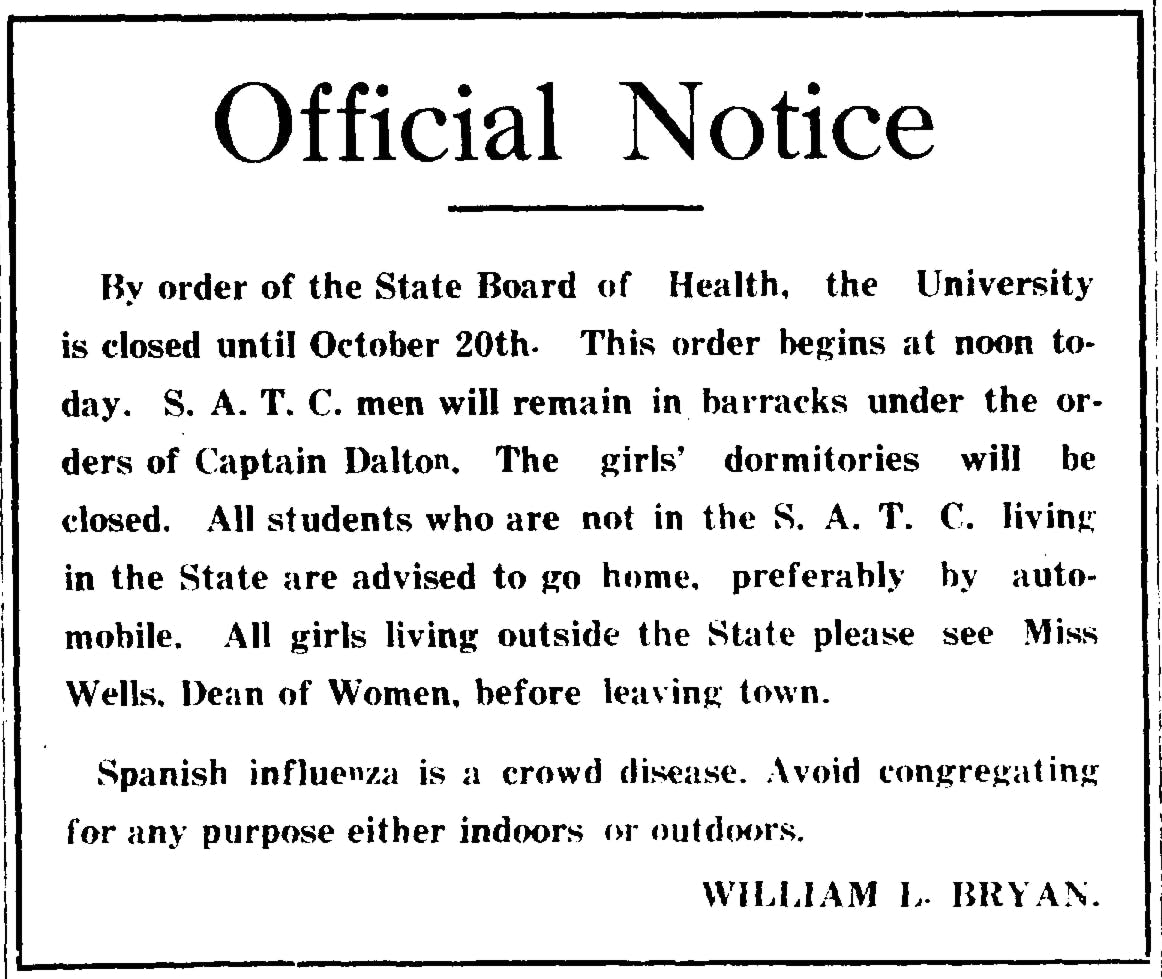
The university shut down the campus for about a month, and all students except members of the Student Army Training Corps were asked to move to their permanent homes. The university closed from October 10 to November 4, and large gatherings remained banned after the campus reopened.
This closure mirrors IU's decision to suspend in-person teaching this semester. IU should consider keeping the campus closed even if the governor's stay-at-home order ends in the next month.
Lesson 3: Turn buildings into hospitals
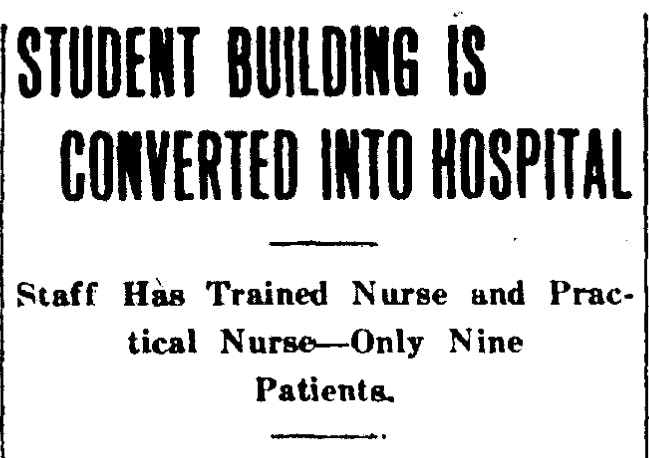
After running out of space at the university infirmary, IU outfitted the old Assembly Hall and the Student Building with hospital beds and supplies. It must have been eerie to see spaces that were once comfortable gymnasiums become hospitals, but it was necessary.
The regional president for the IU Health hospital system said Friday that there are not yet shortages of supplies at IU Health hospitals. Residential Programs and Services is already making plans to convert residence halls into hospitals if necessary.
Lesson 4: Get ready to do it all again
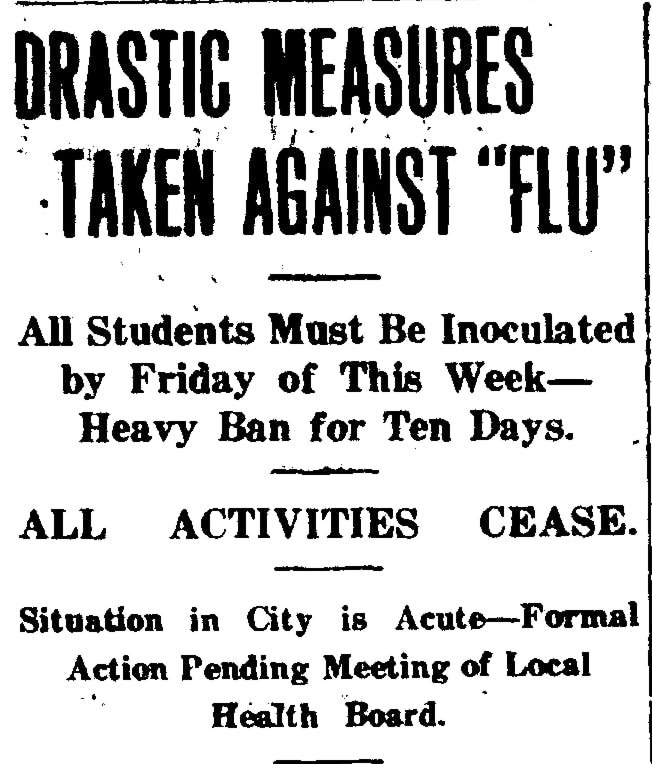
There were two primary outbreaks of the flu at IU. Each lasted about a month. The first one started in October 1918, and the second one started in January 1919. Most students seem to have thought they were in the clear after November, but IU imposed its strictest flu bans the following January.
Scientists have warned that the world should brace for a second wave of the coronavirus. IU must prepare for it as well. The university might have to repeat tough decisions made this year, such as suspending in-person classes, in the future.
Lesson 5: Vaccinate everyone — for free
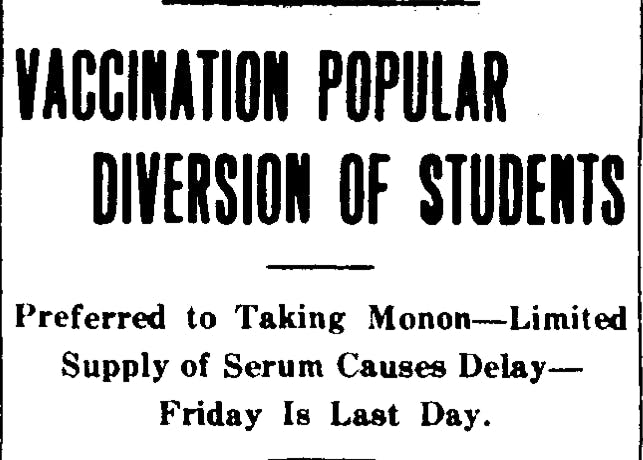
Although there were no vaccines at the time for influenza, doctors distributed "pneumonia vaccines" across the country in an attempt to treat the Spanish flu. At IU, receiving the vaccine was required, and any student or faculty member who didn't get vaccinated was told they would be dismissed.
The vaccine was free of charge, as was most medical treatment provided by the university health service.
A vaccine for the coronavirus will hopefully be available next year. IU should ensure that getting the vaccine costs nothing. As new treatments become available for COVID-19, they should also be made available to students free of charge.
Tom Sweeney (he/him) is a senior studying economics and mathematics and is the treasurer of IU Student Government. He plans to pursue graduate studies in economics.

